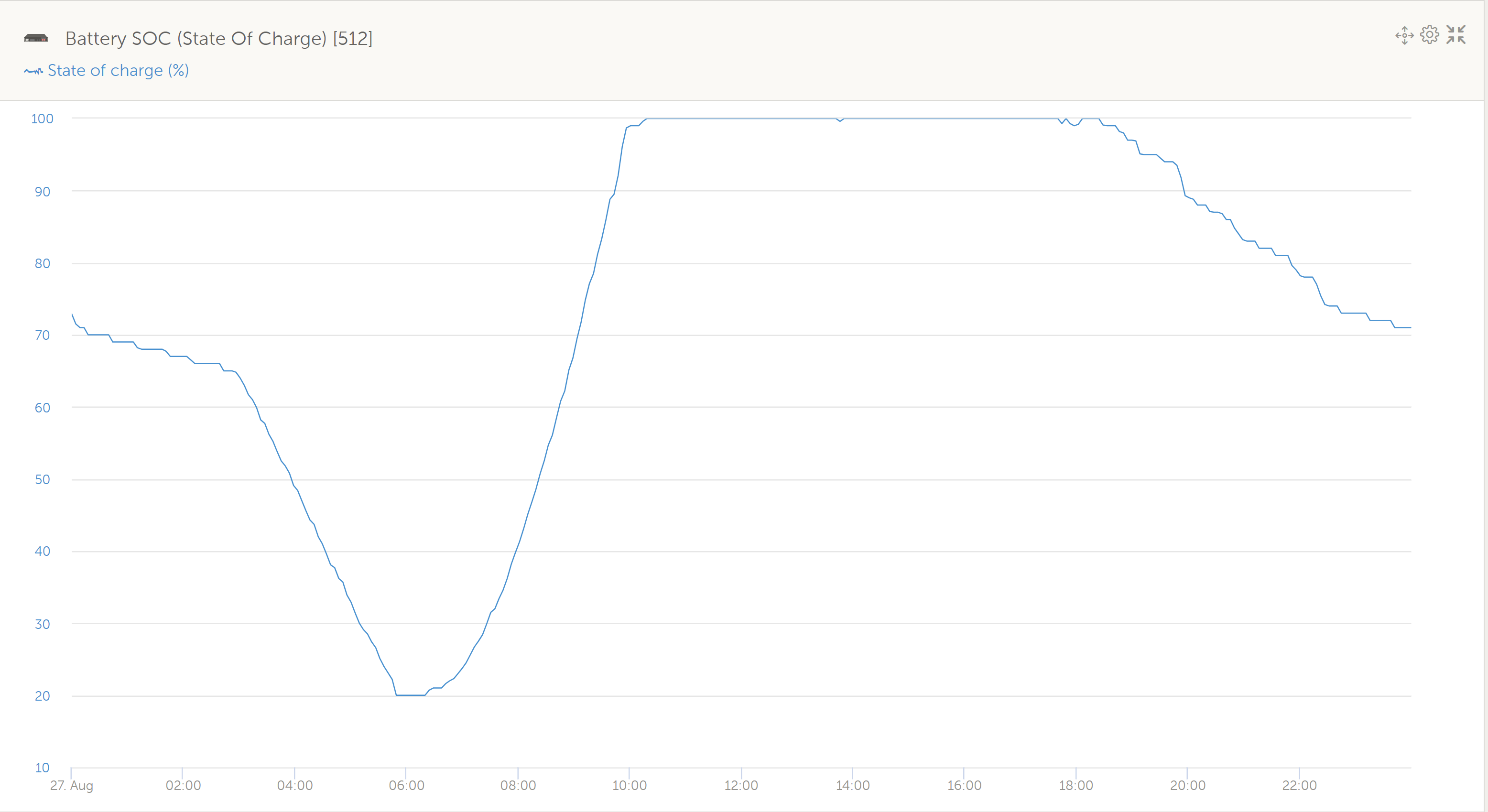in the Multiplus II datasheet I read that for Multiplus II 48/3000/35-32 the Cont. output power at 25°C is 2400 W. Where is the 25°C measured? Inside the Multiplus, or ambient temperature at the fan input?
- Home
- Anonymous
- Sign in
- Create
- Spaces
- Grafana
- Node-Red
- Unsupported topics
- Questions & Answers
- Modifications
- Communauté francophone
- Deutschsprachiger Bereich
- Preguntas en Español
- Explore
- Topics
- Questions
- Ideas
- Articles
- Badges
question
Ambient. See note 4 on the tech data. FYI this is a standard for electronics rating. White paper here
Dictionary
Definitions from Oxford Languages .
adjective
1.relating to the immediate surroundings of something.
"the liquid is stored at below ambient temperature
@Alexandra Thank you, I checked the paper and I understand that this is really an ambient temperature. What I can't figure out is that once tha battery reaches a 100 SoC and the Multipluses start producing alternate curent for the overflow to the grid (almost no consumption in the house), the multipluses do not produce a steady output but start interrupting. See the graph. (I have 3 of them, 3000 VA, cerbo, 10 kWh pylontech batery, Energy Meter ET340)
Interrupted power flow after reaching the 100 SoC:


Thr flow to the grid is very unsteady, plus the Blue Multiplus works hard while the others much less. The work is not distributed evenly.

If you have a way to check their accuracy and perform a calibration you can use the temperature sensors that came with the MP on the cerbo to see all the temperatures at the top of the units.
I would compare grid voltages as well, you can also get derating for that reason and for battery voltage reasons.
What is the spacing like around the units? Is there good air flow?
But it does provide an indication of internal temperature which helps with understanding derating.
For me the 3 and 5kVA derate well below 25C ambient, but I am at almost 5000ft, which would significantly reduce air density and related performance.
That said, I managed to derate these systems at 9C ambient, which compensating for 2C per 1000ft, is still below expectations.
It would run fine for a few minutes at peak output before derating.
Broadly, it is unwise to expect a system to run at 100% continuous output for sustained periods. It is also less efficient at this output level.
Hi @JPika
The uneven production for feeding to grid, I believe, is not related with temperature.
Considering the way the grid injection is performed and the math behind it, the uneven aspect has to do with grid voltage and loads connected to that grid section.
And you can't control those two, but the inverter has to abide by some rules in order to properly function.
Alex
Keeping phase 1 multiplus overloaded while phase 2 and phase 3 underperforming sounds frustrating ... as I said this happend when no load in a house happens.
Yes, but you are grid feeding and you share the grid with a lot of other people and you don't know the load on that phase on the grid, outside your house.
And if that grid phase 1 voltage is low, then there is room for grid injection and the system channel all the energy on that phase.
Study a little the mechanism behind grid feeding and all will become clear.
question details
128 People are following this question.
